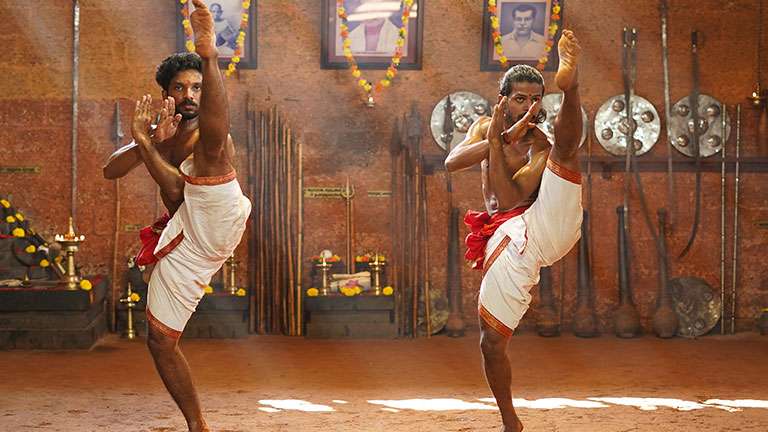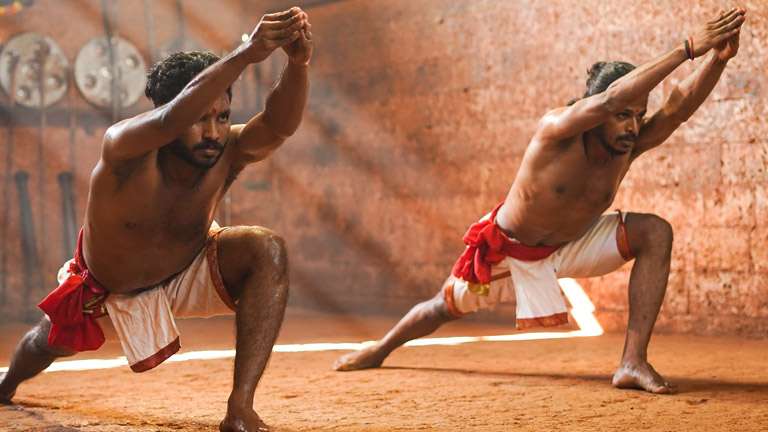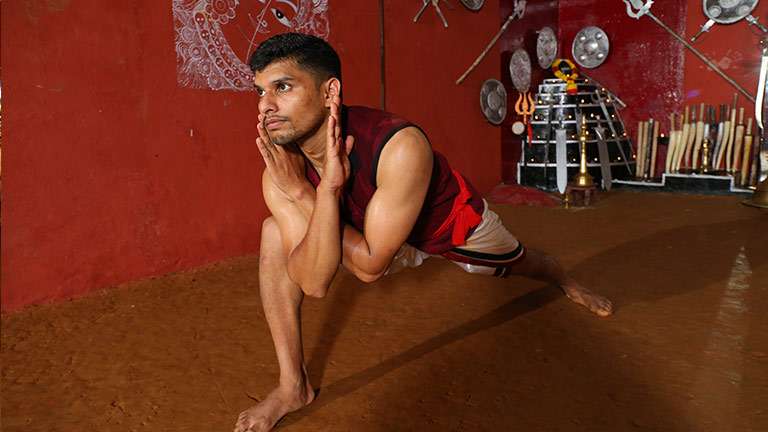


-20022020134802.jpg)
Meythari or Meyppayattu is the backbone of Kalaripayattu, and forms the first step of training. It is a set of physical practices that imparts strength to the body and the mind, and makes the student sure-footed. The practices are categorized under four heads:
The student is trained to move and shift his legs in whichever way he pleases – forwards, backwards, sideways and upwards – while ensuring that he does not lose his balance. In other words, he is made to master chuvadu or steps for attack as well as defence. Second and equally important component of Meythozhil that comes in tandem with chuvadu is vadivu or stance. Third is adavu or technique.

Kalaripayattu teaches five kinds of chuvadu or steps for the attack as well as defence: Aakka chuvadu Neekka chuvadu Chaatta chuvadu Vatta chuvadu and Neeta chuvadu Aakka chuvadu involves placing one’s feet in certain specific positions to ensure stability. Neekka chuvadu implies planting one’s feet forward to confront an enemy or retreating for a successful escape. Chaatta chuvadu means jumping forward or backward quickly either to face the enemy or to flee. Vatta chuvadu entails lifting one’s feet towards the front or back and turning. Neeta chuvadu suggests stretching one’s feet to the maximum possible extent. As can be reasonably surmised, attacks are more effective when one leg is thrust forward and the body is stretched rather than when the legs are placed in their normal position. All the techniques of Kalaripayattu involve the permutations and combinations of the various chuvadu.

While the choice of a particular chuvadu automatically decides the vadivu or stance of the combatant, Kalaripayattu makes an exhaustive inventory of them, drawing inspiration from the postures, attitudes, and stances of various animals as they adopt the fight or the flight mode of self-protection. Gaja Vadivu Some of them are Gaja vadivu (elephant), Simha vadivu (lion), Ashwa vadivu (horse), Varaaha vadivu (wild boar), Sarpa vadivu (snake), Kukkuda vadivu (cock), Marjaara vadivu (cat) and Matsya vadivu (fish). These are called Ashta Vadivukal [ Eight Vadivs]. The first three of the above-mentioned vadivus are judged as the most effective ones. What each of these Kalaripayattu stances exploit is the most advantageous aspect of the particular bird’s or animal’s attack and defence techniques. For instance, the snake posture gives the combatant enough room for quick movement in any direction and a powerful lunge forwards; the peacock stance – with spread-out arms – gives him the benefit of maximizing his body area to keep the enemies at bay before launching an attack on them, and so on. Breath control is considered very important for the student to maintain these stances with strength and balance.

The selection of adavu or technique is also significant. The student is trained in making a choice of the most appropriate way to tackle the enemy for self-protection, to counter-attack or to escape. Although there are several adavus in Kalaripayattu, the usual practice is to train students in 18 of them. Weapons have been in use ever since humans moved beyond stones and twigs to hunt animals and fight enemies. In ancient India, weapons were categorized into four: (i) weapons to cut, slash and stab, like swords and daggers (ii) weapons attached to sticks, like spears and axes (iii) weapons like sticks and maces and (iv) weapons released from hand, like arrows, discuses, catapults, boomerangs and so on. The ancient Indian epics – the Mahabharata and the Ramayana – as well as Kautilya’s Arthashastra carry many references to scores of weapons but modern generations have little knowledge about the shapes, dimensions and uses of most of them.
Department of Tourism, Government of Kerala, Park View, Thiruvananthapuram, Kerala, India - 695 033
Phone: +91 471 2321132, Fax: +91 471 2322279, E-mail: info@keralatourism.org.
All rights reserved © Kerala Tourism 2025. Copyright | Terms of Use | Cookie Policy | Contact Us. Developed & Maintained by Invis.